Education
Want vs. Desire: How They Influence Our Choices
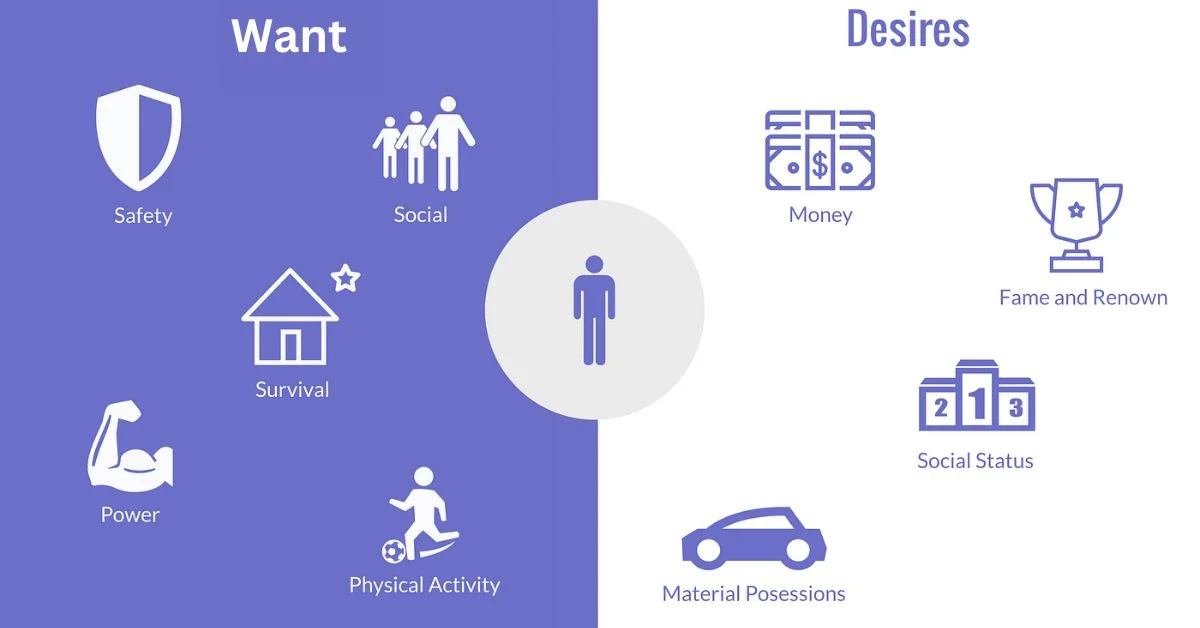
Introduction
We often use “want” and “desire” interchangeably, but these terms carry distinct meanings that significantly influence our choices. Understanding the difference between Want vs. Desire is crucial for personal development, decision-making, and self-awareness. In this article, we’ll explore the psychological, cultural, economic, and philosophical aspects of want and desire and how they shape our lives.
The Psychological Basis “Want vs. Desire”
Biological and Neurological Perspectives
Wants and desires are rooted in our brain’s complex network. The reward system, involving structures like the nucleus accumbens and the ventral tegmental area, plays a pivotal role. Dopamine, a neurotransmitter, is heavily involved in this process, signaling anticipation and motivation.
Emotional and Psychological Perspectives
Emotionally, wants are often linked to immediate satisfaction and practical needs, whereas desires are tied to deeper emotional fulfillment and long-term aspirations. Understanding these differences helps in recognizing why we feel a stronger pull towards certain goals over others.
Defining Want
Characteristics of Wants
Wants are typically associated with specific, short-term objectives. They are often practical, driven by external circumstances or immediate needs.
Examples of Wants
Common examples of wants include needing a new phone, wanting a snack, or wishing for a day off work. These are often influenced by our immediate environment and current situation.
Defining Desire
Characteristics of Desires
Desires, on the other hand, are more profound and long-lasting. They often reflect our inner passions, aspirations, and emotional yearnings.
Examples of Desires
Examples of desires include the longing for love, the aspiration to achieve career success, or the dream of traveling the world. These are deeply personal and resonate with our core values and life goals.
The Role of Wants in Decision Making
How Wants Influence Choices
Wants often lead to more immediate, tangible decisions. They drive us to seek solutions and gratifications that are within reach, influencing our daily habits and routines.
Wants in Daily Life
In everyday life, wants might dictate our shopping habits, the food we eat, or the way we spend our free time. They are essential for navigating practical aspects of life efficiently.
The Role of Desires in Decision Making
How Desires Influence Choices
Desires shape our long-term goals and aspirations. They inspire us to pursue significant life changes, guiding our career paths, relationships, and personal growth.
Desires in Daily Life
While not always immediately actionable, desires influence our daily life by motivating us to take steps toward our bigger dreams. This might include ongoing education, investing in relationships, or working towards health and wellness goals.
Comparing “Want vs. Desire”
Similarities Between Want and Desire
Both wants and desires are essential motivators that drive human behavior. They both stem from a perceived lack or need for something more.
Key Differences Between Want and Desire
Wants are more immediate and practical, while desires are deeper and more abstract. Understanding this distinction helps in prioritizing and balancing various aspects of life.
Cultural Influences “Want vs. Desire”
How Culture Shapes Our Wants
Culture significantly impacts what we want by dictating norms, standards, and expectations. For example, societal norms may influence our desire for specific types of clothing, gadgets, or social status.
How Culture Shapes Our Desires
Desires, while deeply personal, are also shaped by cultural narratives and ideals. Cultural stories about success, happiness, and fulfillment guide our deeper aspirations and life goals.
Economic Perspectives “Want vs. Desire”
Wants and Consumer Behavior
From an economic standpoint, wants drive consumer behavior. Companies often market products to fulfill these immediate needs, influencing purchasing decisions.
Desires and Consumer Behavior
Desires, however, lead to more significant investments in products or services that promise long-term satisfaction and fulfillment, such as luxury items, travel experiences, or education.
Philosophical Views on Want and Desire
Historical Philosophical Views
Historically, philosophers like Plato and Aristotle have discussed the nature of wants and desires, often debating their roles in achieving a good life.
Modern Philosophical Views
Modern philosophy continues this discussion, focusing on how balancing wants and desires can lead to a more fulfilling and meaningful life.
The Impact of Media on Want and Desire
Media’s Role in Shaping Wants
Media plays a crucial role in shaping our wants by constantly exposing us to new products, lifestyles, and trends. Advertisements and social media heavily influence our immediate needs and preferences.
Media’s Role in Shaping Desires
Media also shapes our desires by presenting ideals and aspirations. Movies, books, and celebrities often depict versions of success and happiness that we yearn to achieve.
Managing Wants and Desires
Strategies for Healthy Management
Balancing wants and desires involves self-awareness and self-control. Setting clear priorities, practicing mindfulness, and setting realistic goals can help manage both effectively.
The Role of Self-Control
Self-control is crucial in regulating wants and desires. It helps in making choices that align with long-term goals rather than succumbing to immediate gratifications.
The Intersection of Want, Desire, and Need
Defining Needs
Needs are basic and essential for survival, such as food, shelter, and safety. They differ from wants and desires in their necessity.
How Needs Differ from Wants and Desires
While wants and desires are driven by personal preferences and aspirations, needs are non-negotiable essentials that must be met for basic functioning.
Case Studies and Real-Life Examples
Real-Life Scenarios Illustrating Wants and Desires
Consider a person wanting a new car versus desiring to travel the world. The former is a specific, practical need, while the latter is a broader, long-term aspiration.
Lessons Learned from These Examples
These examples highlight the importance of recognizing and balancing wants and desires to achieve overall well-being and fulfillment.
Conclusion
Understanding the distinction between want and desire helps in making more informed choices that align with both immediate needs and long-term goals. By balancing both, we can lead more fulfilling lives, driven by both practical necessities and deeper aspirations.
FAQs
What is the main difference between want and desire?
The main difference lies in their nature: wants are immediate and practical, while desires are deeper and more long-term.
Can wants turn into desires?
Yes, wants can evolve into desires as they become more deeply ingrained and aligned with our core values and long-term goals.
How do cultural differences affect wants and desires?
Cultural differences shape our wants and desires by influencing societal norms, standards, and ideals, leading to varying priorities and aspirations across cultures.
How can we manage our wants and desires effectively?
Effective management involves self-awareness, setting clear priorities, practicing mindfulness, and exercising self-control to align with both immediate and long-term goals.
What role does media play in shaping our wants and desires?
Media shapes our wants by exposing us to new products and trends and influences our desires by presenting ideals and aspirations through movies, books, and celebrities.
Education
ABCDX Segmentation: Boost Customer Interaction and Sales
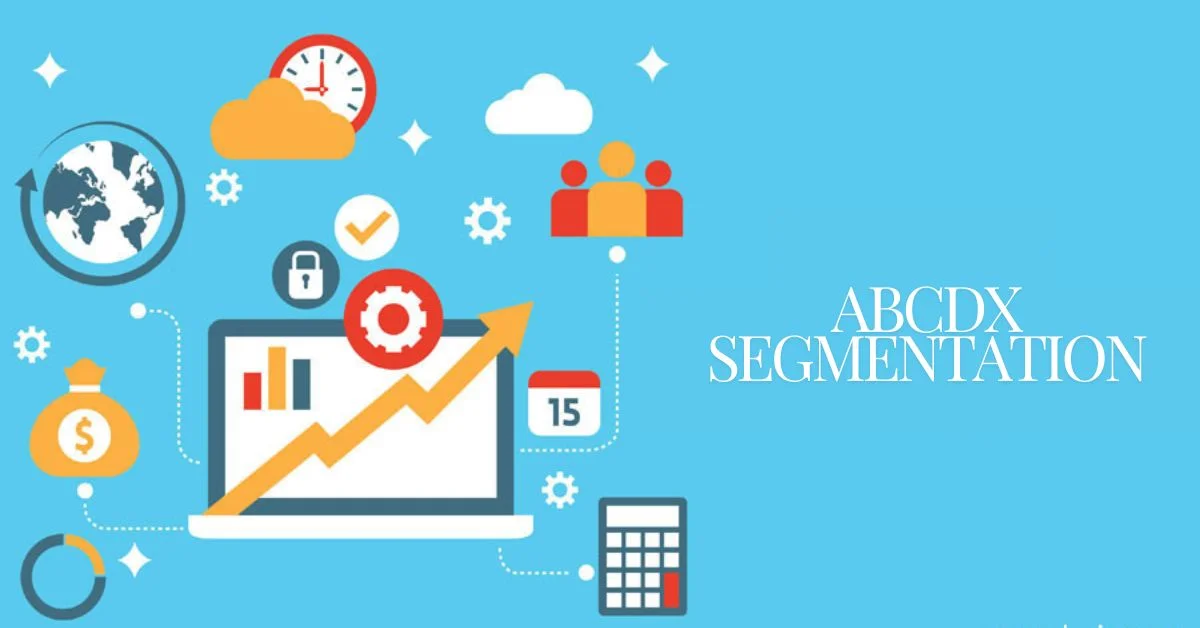
Introduction
In today’s competitive market, understanding and optimizing customer relationships is crucial for business success. One powerful tool for achieving this is ABCDX segmentation. This approach helps businesses categorize their customers into distinct groups based on their payment behavior and interaction with support. By effectively utilizing ABCDX segmentation, companies can enhance customer satisfaction, streamline support efforts, and ultimately boost sales.
Understanding ABCDX Segmentation
Definition and Origin
ABCDX segmentation is a method used to classify customers into five distinct segments: A, B, C, D, and X. Each segment represents a different level of engagement and value to the business. This segmentation approach allows companies to tailor their marketing and support strategies to meet the specific needs of each group.
The Five Segments: A, B, C, D, X
- Segment A: Ideal clients who are highly engaged and satisfied.
- Segment B: Regular users with some objections or comments.
- Segment C: Clients with low engagement and small transaction volumes.
- Segment D: Low-interest clients who use up valuable resources.
- Segment X: Potential Segment A clients who need product modifications.
Segment A: Ideal Clients
Characteristics of Segment A
Segment A clients are the cream of the crop. They are highly interested in the product, make frequent purchases, and have a short transaction cycle. They are also low maintenance when it comes to support, as they are generally satisfied with the product.
Benefits of Targeting Segment A
Focusing on Segment A clients can lead to increased sales and customer loyalty. These clients are likely to provide positive word-of-mouth referrals and contribute to a stable revenue stream.
Strategies for Engaging Segment A
To maintain and grow your relationship with Segment A clients, consider implementing loyalty programs, personalized marketing efforts, and exclusive offers. Ensuring their continued satisfaction can lead to long-term success.
Segment B: Engaged but Critical Clients
Characteristics of Segment B
Segment B clients are engaged with the product but have specific objections or feedback. They make regular purchases and have a short transaction cycle but expect improvements or adjustments.
How to Address Objections and Comments
Actively listen to Segment B clients’ feedback and address their concerns promptly. Implementing changes based on their input can enhance their satisfaction and foster loyalty.
Enhancing Relationships with Segment B
Engage Segment B clients with personalized communication and tailored solutions. Offering exceptional customer service can turn their critical feedback into opportunities for growth.
Segment C: Low-Engagement Clients
Characteristics of Segment C
Segment C clients have a long transaction cycle and make small purchases. They may not be fully satisfied with the product or its fit for their needs, leading to lower engagement levels.
Challenges with Segment C
Managing Segment C clients can be challenging due to their low engagement and high likelihood of attrition. They may also require more resources for support and sales efforts.
Strategies for Improving Engagement
To increase engagement with Segment C clients, consider offering targeted promotions, improving product features, and enhancing customer support. Understanding their needs and addressing them effectively can lead to better results.
Segment D: Low-Interest Clients
Characteristics of Segment D
Segment D clients are minimally interested in the product and require significant time and resources for support. They rarely make purchases and may be a drain on sales and support teams.
Impact on Sales and Support
Segment D clients can affect overall business performance by consuming resources without contributing significantly to revenue. It’s important to manage these clients efficiently to minimize their impact.
Strategies for Managing Segment D
Consider strategies such as reducing support efforts for Segment D clients, focusing on other segments, or even reevaluating their fit for the product. Streamlining processes can help mitigate their impact.
Segment X: Potential Ideal Clients
Characteristics of Segment X
Segment X clients show potential to become Segment A but currently find the product unsuitable. They often request modifications or improvements, indicating a need for product adjustments.
Identifying Opportunities for Improvement
Analyze feedback from Segment X clients to identify common themes and areas for improvement. Tailoring your product to meet their needs can convert them into high-value clients.
Developing Strategies to Convert Segment X
Engage Segment X clients through targeted trials, personalized offers, and product enhancements. Demonstrating a commitment to meeting their needs can encourage their transition to Segment A.
Implementation of ABCDX Segmentation
Steps for Segmenting Your Audience
- Collect and analyze customer data.
- Define criteria for each segment based on payment behavior and support interaction.
- Categorize customers into the appropriate segments.
- Develop targeted strategies for each segment.
Tools and Technologies for ABCDX Segmentation
Utilize CRM systems, analytics platforms, and marketing automation tools to effectively manage and analyze your customer segments. These technologies can streamline segmentation and enhance targeting efforts.
Case Studies and Examples
Explore case studies of companies that have successfully implemented ABCDX segmentation. Analyze their strategies and outcomes to gain insights and apply similar approaches to your business.
Benefits of ABCDX Segmentation
Improved Customer Satisfaction
By addressing the specific needs of each segment, businesses can enhance overall customer satisfaction and loyalty.
Enhanced Sales Performance
Targeting the right segments with tailored strategies can lead to increased sales and revenue.
Efficient Resource Allocation
Segmentation helps businesses allocate resources more effectively, focusing efforts where they will have the greatest impact.
Challenges and Solutions
Common Challenges in ABCDX Segmentation
- Difficulty in accurately categorizing customers.
- Managing diverse needs across multiple segments.
- Ensuring consistent and effective communication.
Solutions and Best Practices
- Use advanced analytics to improve segmentation accuracy.
- Develop clear strategies for each segment.
- Regularly review and adjust segmentation criteria based on performance.
Future Trends in Customer Segmentation
Emerging Trends in Segmentation
Stay ahead of trends such as hyper-personalization, predictive analytics, and AI-driven insights. These advancements can enhance your segmentation efforts and drive better results.
The Role of AI and Machine Learning
AI and machine learning technologies are transforming customer segmentation by providing deeper insights and automating processes. Leveraging these technologies can improve accuracy and efficiency.
Conclusion
ABCDX segmentation offers a powerful approach to understanding and optimizing customer relationships. By effectively categorizing customers and tailoring strategies to each segment, businesses can enhance customer satisfaction, boost sales, and allocate resources more efficiently. Embrace the ABCDX model to unlock the full potential of your customer interactions and drive business success.
FAQs
What is the main goal of ABCDX Segmentation?
The goal is to categorize customers into distinct segments to tailor marketing and support strategies, improving satisfaction and driving sales.
How can I implement ABCDX Segmentation in my business?
Collect customer data, define criteria for each segment, categorize customers, and develop targeted strategies for each group.
What are the benefits of focusing on Segment A?
Segment A clients are highly engaged and satisfied, leading to increased sales, customer loyalty, and positive referrals.
How do I convert Segment X into Segment A?
Analyze feedback from Segment X, identify opportunities for product improvements, and engage them with tailored solutions and trials.
What tools are best for managing ABCDX Segmentation?
CRM systems, analytics platforms, and marketing automation tools are essential for managing and analyzing customer segments effectively.
Education
Why Think-Feel-Do Is Key in Strategic Marketing Communication
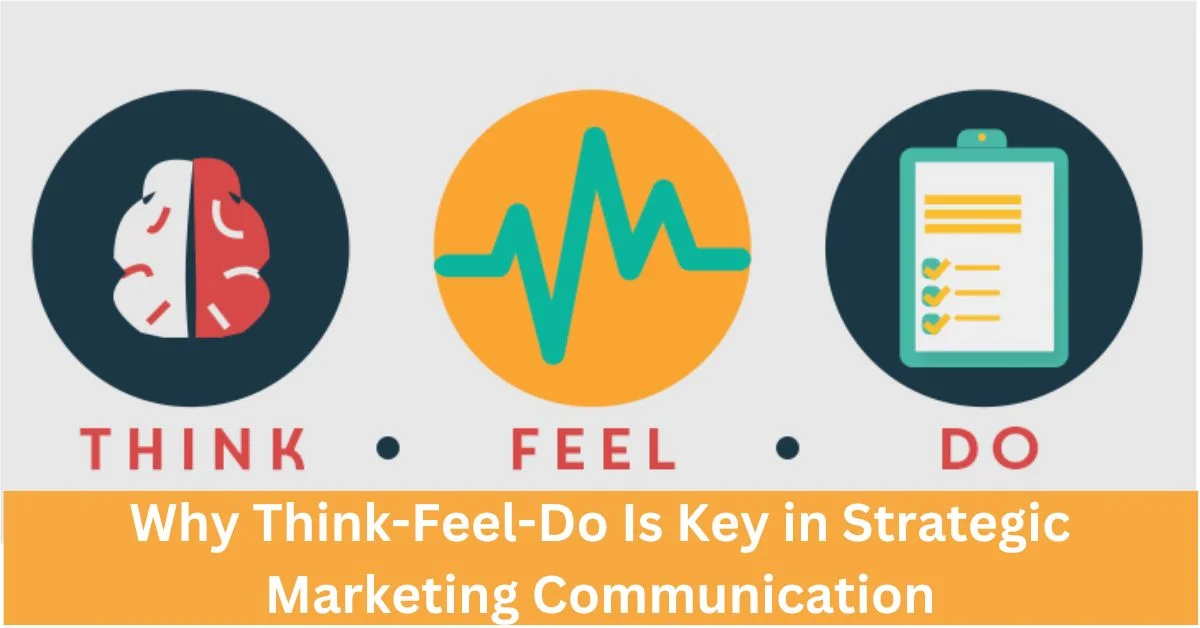
Introduction
In the ever-evolving landscape of marketing, understanding how to effectively communicate with your audience is crucial. The Think-Feel-Do framework stands out as a proven model for strategic marketing communication. This approach helps marketers craft messages that resonate on multiple levels, ensuring they not only capture attention but also drive meaningful action. In this article, we will explore why the Think-Feel-Do framework is indispensable for modern marketing strategies.
Understanding the Think-Feel-Do Framework
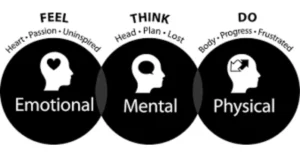
Think: Cognitive Engagement
The “Think” phase involves engaging your audience’s cognitive processes. It’s about what your audience is thinking when they encounter your marketing message. This phase focuses on delivering clear, compelling information that educates and informs.
- What does “Think” involve?
- This step requires understanding your audience’s needs and delivering relevant, valuable content.
- Importance of targeting thoughts
- Engaging the mind is crucial for making an initial impact and positioning your brand as a valuable resource.
Feel: Emotional Connection
Emotions play a pivotal role in decision-making. The “Feel” phase is about connecting with your audience on an emotional level.
- The role of emotions in marketing
- Emotional responses can significantly influence purchasing decisions, making it essential to tap into your audience’s feelings.
- Building emotional resonance
- Crafting messages that evoke feelings of trust, excitement, or empathy can enhance brand loyalty and customer engagement.
Do: Actionable Outcomes
The final phase, “Do,” focuses on driving action. This involves encouraging your audience to take specific steps, such as making a purchase or signing up for a newsletter.
- Driving consumer actions
- Effective marketing strategies must include clear calls to action that guide the audience toward the desired behavior.
- Measuring effectiveness
- Assessing the success of your strategies involves tracking key metrics to see how well you’re converting engagement into actions.
The History and Evolution of Think-Feel-Do
The Think-Feel-Do framework has been a staple in marketing communication for decades. Its origins can be traced back to early psychological studies on consumer behavior and decision-making processes. Over time, the framework has evolved to accommodate changes in technology and media, adapting to digital and social media landscapes.
Implementing Think-Feel-Do in Modern Marketing
Adapting the Think-Feel-Do framework to modern digital channels involves leveraging new tools and platforms.
- Adapting to digital channels
- Digital marketing offers new opportunities for engagement, from social media to email campaigns. Tailoring the Think-Feel-Do approach to these channels can enhance its effectiveness.
- Case studies of successful implementation
- Brands like Nike and Apple have effectively used this framework to drive their marketing strategies, demonstrating its versatility and impact.
Benefits of Using the Think-Feel-Do Framework
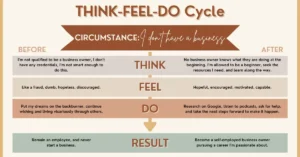
Utilizing the Think-Feel-Do framework offers several advantages:
- Enhanced customer understanding
- By focusing on what customers think, feel, and do, marketers can gain a deeper understanding of their audience’s motivations.
- Improved communication strategies
- Tailoring messages to address all three phases ensures a comprehensive approach to customer engagement.
- Increased ROI
- Effective implementation can lead to higher conversion rates and better returns on marketing investments.
Challenges and Solutions
While the Think-Feel-Do framework is powerful, it comes with its own set of challenges.
- Common pitfalls
- Overlooking one of the phases or failing to adapt to audience changes can hinder effectiveness.
- Strategies to overcome challenges
- Regularly reviewing and adjusting your approach based on feedback and performance metrics can help mitigate these issues.
Think-Feel-Do in Different Sectors
The Think-Feel-Do framework is versatile and can be applied across various sectors.
- Retail
- In retail, the framework can help drive purchases by addressing customer needs and emotions at different stages of the buying process.
- Services
- For service-based industries, focusing on the emotional connection and actionable outcomes can enhance customer satisfaction and loyalty.
- B2B
- In B2B marketing, understanding the decision-making process and crafting targeted messages can lead to more successful business relationships.
Tools and Techniques for Think-Feel-Do Implementation
Several tools and techniques can aid in the implementation of the Think-Feel-Do framework.
- Analytics and tracking tools
- Tools like Google Analytics and CRM systems can help track engagement and conversion metrics, providing insights for optimization.
- Creative techniques for engagement
- Innovative content formats, such as interactive videos or personalized emails, can enhance emotional and cognitive engagement.
Future Trends in Think-Feel-Do Marketing
The future of marketing will likely see continued evolution in how the Think-Feel-Do framework is applied.
- Emerging technologies
- Advancements in AI, machine learning, and data analytics will provide new opportunities for refining and personalizing marketing strategies.
- Predictions for the future
- As consumer behavior evolves, the Think-Feel-Do framework will need to adapt, incorporating new insights and technologies to remain effective.
Conclusion
The Think-Feel-Do framework remains a cornerstone of strategic marketing communication due to its comprehensive approach to engaging audiences. By addressing cognitive, emotional, and actionable aspects of customer interactions, marketers can craft more effective and impactful campaigns. As the marketing landscape continues to evolve, revisiting and refining this framework will be essential for staying ahead.
FAQs
What is the Think-Feel-Do framework?
The Think-Feel-Do framework is a model used in marketing communication that focuses on engaging customers’ thoughts, emotions, and actions to drive effective outcomes.
How can I implement Think-Feel-Do in my marketing strategy?
Implement the framework by tailoring your content to address what your audience thinks, feels, and does, using data and insights to guide your approach.
What are the benefits of using Think-Feel-Do?
Benefits include a deeper understanding of customer behavior, improved communication strategies, and increased return on investment.
What are some examples of Think-Feel-Do in action?
Examples include successful campaigns by brands like Nike and Apple, which effectively engage customers through thoughtful, emotional, and actionable messaging.
How does Think-Feel-Do compare to other marketing frameworks?
Unlike some frameworks that focus on only one aspect of engagement, Think-Fe’el-Do provides a holistic approach by addressing cognitive, emotional, and behavioral components.
Education
The Psychology Behind Testimonials in Propaganda

Introduction
In the realm of communication and persuasion, propaganda often employs a variety of techniques to influence public opinion. Among these techniques, testimonials play a crucial role. By understanding the psychology behind testimonials in propaganda, we can better grasp how these endorsements shape our perceptions and beliefs.
Understanding Testimonials
What is a Testimonial?
A testimonial is a statement or endorsement given by an individual or group that supports a product, idea, or cause. In propaganda, testimonials are used to lend credibility and emotional weight to a message. These endorsements can come from various sources, including satisfied customers, celebrities, or experts.
Types of Testimonials
- Personal Endorsements: These are testimonials from ordinary individuals who share their personal experiences. Their authenticity often resonates with the audience, making the message more relatable.
- Celebrity Endorsements: When a well-known figure supports a cause or product, it can leverage their fame and influence to persuade others. Celebrity testimonials can significantly boost the perceived value and trustworthiness of the message.
- Expert Opinions: Testimonials from experts in a field can provide authoritative backing to a message. Their knowledge and credentials add a layer of credibility that can be highly persuasive.
The Role of Testimonials in Propaganda
Building Credibility
Testimonials help build credibility by providing evidence that others have had positive experiences. In propaganda, this can translate to increased trust in the message being promoted. When people see that others, especially those they respect or relate to, endorse a cause, they are more likely to believe in it.
Emotional Appeal
Testimonials often evoke emotions, whether through personal stories or enthusiastic endorsements. This emotional connection can make the propaganda more compelling and memorable, as emotions often drive decision-making more than rational arguments alone.
Influencing Perceptions
By showcasing favorable testimonials, propaganda can shape public perceptions of a product, idea, or political stance. This influence can steer public opinion in a desired direction, reinforcing the desired narrative.
Psychological Mechanisms Behind Testimonials
Trust and Authority
People tend to trust individuals who seem authoritative or knowledgeable. Testimonials from experts or celebrities often play on this psychological bias, leveraging their perceived authority to lend weight to the message.
Social Proof
The concept of social proof suggests that individuals are influenced by the behaviors and endorsements of others. When a testimonial reflects a broad consensus or popular opinion, it can reinforce the idea that the message is widely accepted and correct.
Cognitive Dissonance
Testimonials can also address cognitive dissonance, a psychological state where holding conflicting beliefs creates discomfort. By providing reassuring testimonials, propaganda can help resolve this discomfort and align public opinion with the promoted message.
Testimonials and Persuasion
The Persuasive Power of Testimonials
Testimonials are a powerful tool in persuasion because they offer a form of validation. When people hear positive feedback from others, it reduces skepticism and increases the likelihood of acceptance. This technique is frequently used in marketing, politics, and social campaigns to sway opinions and behaviors.
Case Studies and Examples
- Historical Examples: During World War II, propaganda often used testimonials from soldiers and veterans to promote enlistment and boost morale. These personal stories added authenticity and emotional weight to the messages.
- Modern Examples: In contemporary marketing, brands frequently use customer testimonials to highlight the benefits of their products. Positive reviews and endorsements can significantly impact consumer purchasing decisions.
Ethical Considerations
Manipulation vs. Genuine Endorsement
One of the major ethical concerns with testimonials in propaganda is the line between genuine endorsement and manipulation. While testimonials can offer authentic praise, they can also be used to deceive or manipulate the public by presenting biased or misleading information.
The Impact on Public Opinion
The ethical use of testimonials can influence public opinion positively, fostering trust and informed decision-making. Conversely, deceptive or manipulative testimonials can lead to misinformation and skewed perceptions, impacting public trust and societal outcomes.
Analyzing the Effectiveness of Testimonials in Propaganda
Measuring Impact
To assess the effectiveness of testimonials in propaganda, it’s essential to measure their impact on public opinion and behavior. This can involve analyzing changes in attitudes, behaviors, and overall engagement with the message.
Success Stories and Failures
Successful testimonials often lead to increased credibility and support for the message. However, failures can occur if the testimonials are perceived as insincere or if they don’t resonate with the target audience. Understanding these outcomes can provide valuable insights into how to use testimonials effectively.
Strategies for Creating Effective Testimonials
Crafting Authentic Testimonials
To maximize the impact of testimonials, they should be authentic and relatable. Genuine endorsements that reflect real experiences are more likely to build trust and persuade the audience.
Avoiding Common Pitfalls
Common pitfalls in creating testimonials include using overly promotional language, presenting testimonials that lack credibility, or failing to address potential counterarguments. Avoiding these issues can enhance the effectiveness of testimonials in propaganda.
Future Trends in Testimonial Usage in Propaganda
Digital and Social Media Influence
With the rise of digital and social media, testimonials are increasingly shared and amplified online. This trend can enhance the reach and impact of testimonials but also raises concerns about authenticity and the potential for viral misinformation.
Emerging Technologies
Advancements in technology, such as deepfakes and synthetic media, may influence the future of testimonials in propaganda. These technologies can create realistic but fabricated endorsements, posing new challenges for authenticity and trust.
Conclusion
Testimonials play a significant role in propaganda by leveraging credibility, emotional appeal, and psychological mechanisms to influence public opinion. While they can be a powerful tool for persuasion, their ethical use is crucial in ensuring that they contribute positively to public discourse. Understanding the psychology behind testimonials can help us navigate and critically assess the messages we encounter.
FAQs
What is the main purpose of testimonials in propaganda?
The main purpose of testimonials in propaganda is to lend credibility and emotional weight to a message, making it more persuasive and influential.
How do testimonials influence people’s decisions?
Testimonials influence decisions by providing validation through others’ experiences, creating trust, and appealing to emotions and social proof.
Can testimonials be misleading?
Yes, testimonials can be misleading if they are manipulated or presented without full context, leading to biased or false impressions.
What are some famous examples of testimonials in propaganda?
Historical examples include war-time enlistment campaigns with soldier testimonials, and modern examples include customer reviews and endorsements in advertising.
How can one create an effective testimonial?
To create an effective testimonial, ensure it is authentic, relatable, and reflects genuine experiences while avoiding overly promotional language.
-

 Fashion2 years ago
Fashion2 years agoExploring Purenudism: Embracing Body Positivity and Freedom
-

 Shops1 year ago
Shops1 year agoStaples Store Hours: What Time Does Staples Open And Close?
-

 Shops1 year ago
Shops1 year agoWalgreen Pharmacy Hours: What Time Does It Open & Close?
-

 Shops2 years ago
Shops2 years agoWalmart Vision Center Hours
-

 Shops1 year ago
Shops1 year agoPublix Pharmacy Hours and Locations
-

 Business2 years ago
Business2 years agoDesigner Clothing: Making a Statement
-

 Shops1 year ago
Shops1 year agoWalmart Deli Open & Close Hours
-

 Entertainment2 years ago
Entertainment2 years agoRoku Red, White, and Blue: Streaming the cultural heart of America
